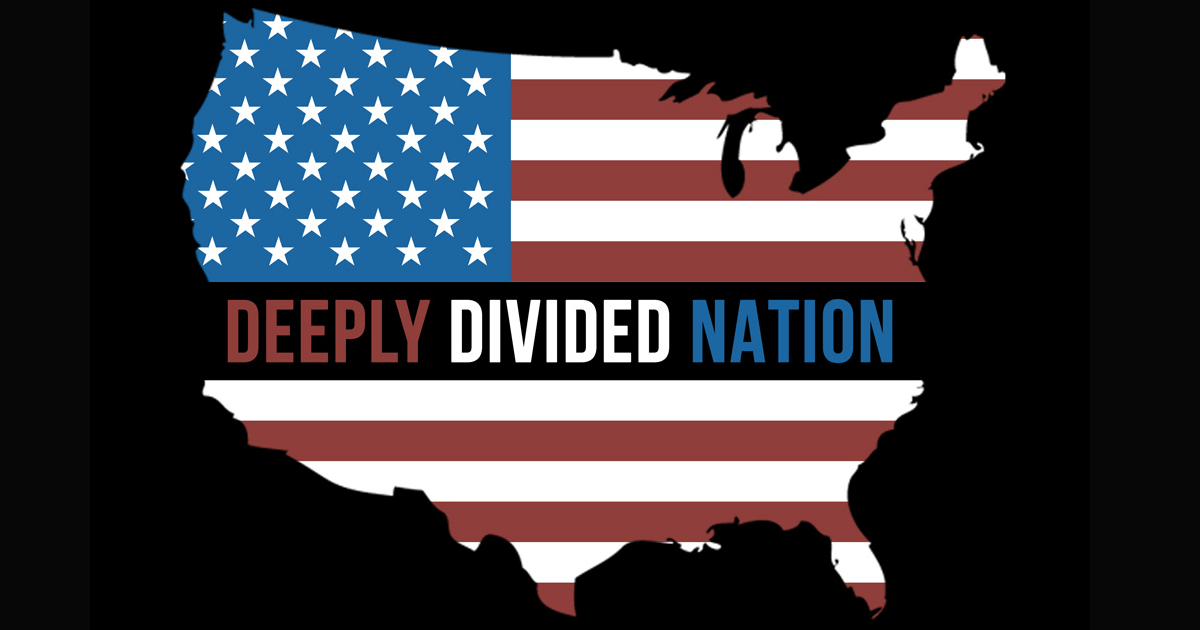
Most democratic and even non-democratic countries around the world have some form of a political party. A political party in essence is a group of individuals that influence the political sphere. Within any given political party, there are fundamental components. These components are Ideology, Platform, Philosophy, Party System, and Psychological State of the Party Members or Followers. The Psychological State of Party Members or Followers is where things get interesting, funny, and worrisome. After all, psychological and emotional state is what usually drives most politicians. Aside from money and power. All political ideas and initiatives begin with the phrases such as “I think,” or “I feel.” Ideological beliefs compound the emotional issues, which drive radical political ideas. But for the sake of the argument, let’s explore the problems and the root of the problems, which the United States currently has. More specifically, how, and why this nation is so entrenched and divided between the two major political parties instead of being united. To answer that question, we must first explore the history of political parties.
There are four main reasons why people in the U.S. are polarized between the two main political parties. Cultural Differences, Geography of the U.S., political history of the U.S. as well as Wars that the U.S. has fought. The cultural differences in the United States are the result of the separation of each state, which evolved due to political reasons in the 1800s and ultimately the Civil War. Even though the U.S. is one nation, the U.S. is comprised of 50 states, and each state is a sovereign entity with its own laws and culture. Each state also has its laws as well as ideologies. The geography of the U.S. is what compounds the problem. The U.S. is about 2,800 miles wide. Between the East Coast and the West Coast, the U.S. is a host of natural barriers of forests, deserts, farmland, and relatively scarcely populated areas. The U.S. geography and distance between each state’s main cities create natural social and cultural boundaries. Northern and southern states that are close to other countries such as Canada and Mexico, also create cultural boundaries. We also must look at the historical reasons in detail to understand why people in the U.S. are so entrenched between the political parties.
Political party systems are not new. Political parties have been around since Roman times. At least when the Roman empire was a Republic. The political parties in America have been around since the 19th century but took a steep turn when in 1824 the predominant party, Democratic-Republicans split between Andrew Jackson and James Quincy Adams, forming the Democratic Party and the Republican Party. Andrew Jackson ran with the Democratic Party and James Quincy Adams ran with the National Republican party. A few decades later, a third party emerged to form what we now call the modern Republican Party. The New and Modern Republican Party for which Abraham Lincoln ran for the President of the United States, and this is when the problems began. The election of Abraham Lincoln on the Anti-Slavery platform in 1860 is what ultimately started the civil war. There were other parties around at that time and to this day there are more than two parties, but the main two parties then and now are the Democratic and Republican parties.
Abraham Lincoln’s election in 1860 pushed the initial six southern states to secede from the Federal Union government because Abraham Lincoln ran on the anti-slavery platform. By the time a seventh state seceded, a Confederate government was formed. By 1861, the Confederate Army launched an initial attack on Fort Sumter in South Carolina right after Abraham Lincoln’s first inauguration officially launching the Civil War, which ultimately killed around 620,000 people on both sides. Ultimately, on one side of the argument, Republicans freed the slaves and another side of the argument, the Old Republicans are today’s Democrats. Neither claim has been proven yet but that is only because each party system shifted its platforms over time. Multiple times.
Moving forward, during the early 1900s, for the most part, people did not fight over political parties. No one cared which political party you were part of as long as you weren’t a Socialist, Communist, or Nationalist. People were civil with one another. After the Japanese attacked Pearl Harbor on December 7th, 1941, there were no Party lines to even talk about. Everyone was an American and all Americans united under one flag. But in the 60s things once again began to spiral out of control. Mainly due to the Vietnam War. The Vietnam war by most accounts was just another war. On the political side, the Vietnam war was a war to curtail the spread of communism. On the World’s political Stage, it was much deeper. The Vietnam War was a war to prevent the Russians and the Chinese from spreading their totalitarian regimes throughout Southeast Asia. The consequences of that happening were the expansion of the Indochina Wars, which we’re going on since the 1950s.
The conflict in Vietnam expanded to a full-scale war in 1964 when President John F. Kennedy escalated the United States’ involvement by sending 23,000 Troops to counter the 40,000 troops sent by North Vietnam. This is when the dispute between the political parties resurfaced. In 1964, John F. Kennedy, a Democrat, re-enacted the Military Draft. As justified as this war was, the military draft polarized America between the party lines once again due to the growing unpopularity of the war due to the draft. Ironically, most of the people who were unpopular with the war were Democrats. There were also the Hippies who were mostly on the centrist or libertarian side, but they accounted for a smaller side of the political spectrum. As the draft and the death toll rose during the Vietnam War, the resentment for the war from mostly the Democratic and Libertarian sides grew.
After the assassination of President Kennedy, President Lyndon B. Johnson quickly ramped up the war even further. Escalating the troop size as well as expanding the US Bombing Campaigns, popularly known as Rolling Thunder & Rolling Thunder II. As the war raged on, the death toll on both sides was climbing. Not counting the civilian death tolls which were estimated to be between 1 million to 3 million civilians. As the death toll kept rising, more and more Americans began to polarize between the support of the war as well as political parties. The polarization between the two major parties was escalating. America’s peak involvement, as well as resentment, reached during the 1968 Tet Offensive. The Vietnam war has no exact ending date, but most of the American Troops withdrew from Vietnam by 1972. By 1974, there were no more U.S. Military troops, and Vietnam was later invaded by the Chinese in 1979.
After the Vietnam war, the polarization of the two main Political Sides subsided once again. At least for the most part. Mainly due to relative peace or military victories with minimal casualties on the United States Side. Possibly due to the combination of both. Between the Invasion of Grenada, Panama, Operation Desert Storm, and Operations in Somalia, the United States only lost 200 US Military Personnel due to direct combat engagements. After September 11, 2001, Terrorist attack on the United States, Americans once again didn’t focus on political parties and we were all Americans again. Regardless of which political party someone was affiliated with. But that all changed once again after Obama won the Presidency. America once again began polarizing and ultimately entrenching between the two major political parties due to various policies such as the Affordable Care Act and the Nuclear Deal. The 2016 Elections were another turning point for the worst. Many Americans to this day still believe that we are on the verge of another civil war between the Democrats and the Republicans.
With a combination of various factors such as opinionated media interference, radical positions on both sides, and most damaging factors such as disinformation, Americans are once again entrenched between the two major parties the democratic side and the republican side. Not counting other political parties such as the Libertarians. At this point, with World War III Looming over our heads, the economical strife as well as the current health crisis, it is abundantly clear that we’re headed in the wrong direction. January 6th, 2021, insurrection is a clear sign of worse things to come in America as well as around the world. With the growing number of issues Americans are currently facing, we can’t afford to have separate parties. The political party labels must be removed, and politicians must focus on issues rather than political parties.
John Adams predicted that a two-party system would divide this nation. John Adams famously quoted “a division of the republic into two great parties … is to be dreaded as the great political evil” Based on what is happening in the United States, that prediction is accurate to the letter. It is abundantly clear that the cultural differences, as well as the geography of the U.S., are driving Americans further apart from each other.




